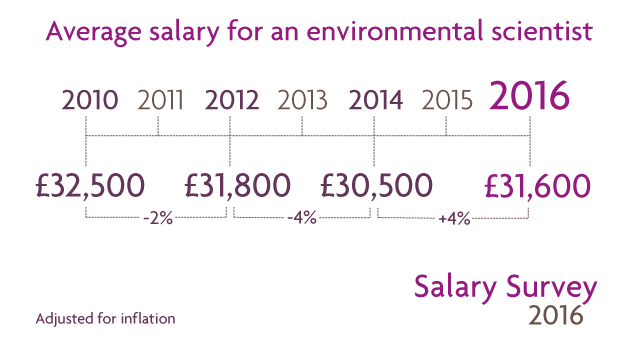Every two years the IES Salary Survey offers insight into how the sector is performing over time and relative to the national average. The report looks at differences in pay across sectors, job positions, ages and gender.
This year’s survey received our highest response rate ever, with approximately one third of professional members responding.
The full report will be published next month but here is a sneak preview of some of the headline results we found.
Average Salary
The data from the Salary Survey 2016 showed a slight increase in average salaries across the sector from 2014. However, this increase is not significantly different by itself and when adjusted for inflation the difference dramatically reduces. As this difference is within the bounds of uncertainty it means that salaries in the environmental sciences have probably stagnated, a trend that is in line with figures nationally. According to the ONS, 2015 saw an increase in median gross weekly income for the first time since 2008. It is not therefore possible to say whether this effect has also been found in the environmental sciences.
Gender wage gap
In the Salary Survey 2014 the gap between the wages of men and women working in the environmental sciences appeared to be growing. One of the key things we were therefore looking for in the Salary Survey 2016 was if that instance had been a statistical anomaly or evidence of a persistent trend.

In the Salary Survey 2016 a wage gap was again found. The specific change in average salaries for men and women is not statistically significant and therefore it is not possible to state whether this gap has changed. Nevertheless, the evidence of a persistent gap is concerning.
The median salaries of either gender in this instance are estimated to be approximately:
- Male: £37,500
- Female: £31,500
This is a gap of approximately 19%, which is about equal to the gap that the ONS has found nationally.
This is a key area of focus for the IES and a Women in Environmental Sciences Steering Group was set up several months ago to begin looking at how this can be tackled. This work will be continued with even greater fervour now this gap has been confirmed.



